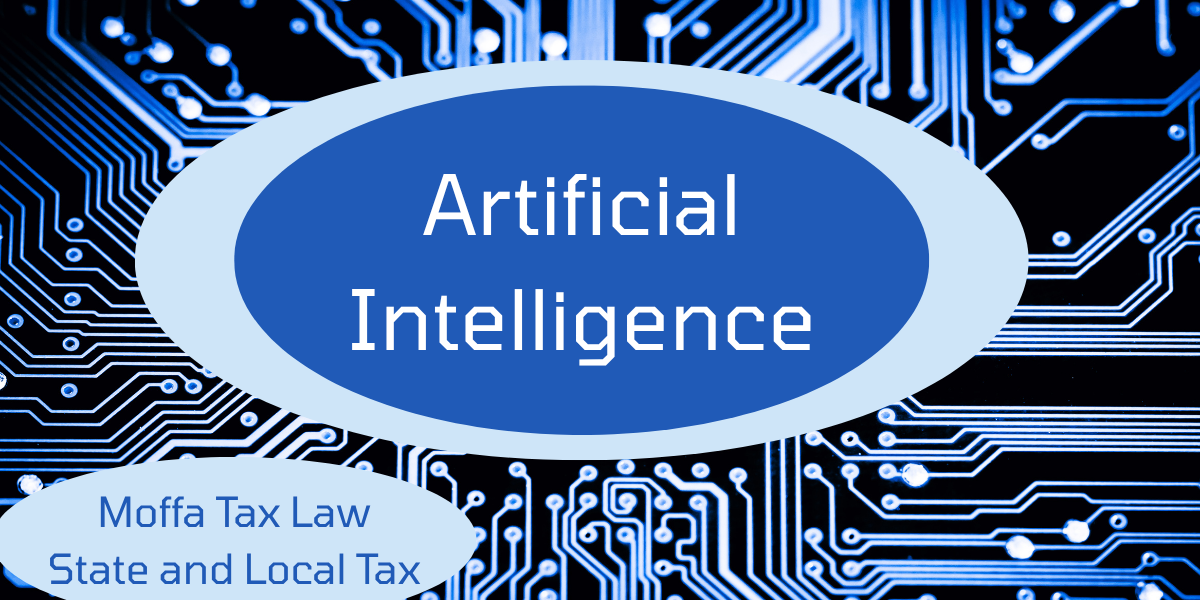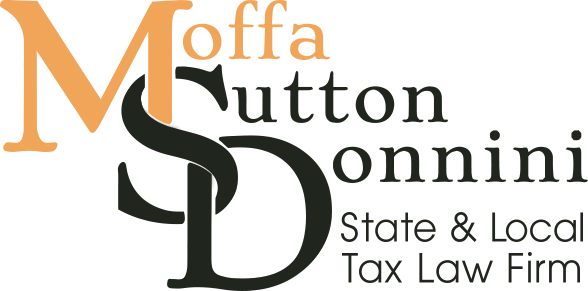NEWS & INSIGHTS


As artificial intelligence (AI) continues to reshape industries in 2025, its impact on state and local tax (SALT) functions is no longer theoretical. From sales tax audits to apportionment analysis, AI-driven tools are increasingly used to automate research, review documents, support compliance, and even craft legal arguments. Generative AI, large language models (LLMs), and machine learning are now entering daily workflows, both in tax departments and in the hands of revenue agencies.
This article explores the current state of AI in state tax administration, how corporate tax teams are deploying AI tools, what ethical and legal risks accompany their use, and why prompt engineering and “grounding data” are essential to successful applications.
The Evolution of Generative AI in Tax Practice
Although the concept of artificial intelligence dates back to the mid-20th century, modern breakthroughs began in earnest around 2014 with rapid advances in machine learning. The release of advanced LLMs like GPT-3 and GPT-4 enabled unprecedented levels of human-like language generation, which quickly became a foundational tool in knowledge-based professions—including tax law and compliance.
Today, AI tools can draft memos, summarize audit reports, interpret nexus laws, analyze large data sets, and generate tailored research across multiple jurisdictions. More importantly, companies can now integrate AI models with their internal tax knowledge bases, creating customized agents and virtual assistants that replicate institutional tax expertise at scale.
Understanding the Types of AI Tools in Use
AI tools in the tax world are not all created equal. They generally fall into a few broad categories:
Chatbots and LLMs: Tools like ChatGPT and Microsoft Copilot that interpret natural language and generate detailed responses.
Embedded AI: AI-enhanced features built into existing platforms like Microsoft Office, Bloomberg Tax, and Checkpoint.
AI Assistants and Agents: Custom-built virtual tools that perform specific tasks like summarizing tax notices, translating documents, or managing audit workflows.
Advanced AI Models: Internal enterprise-level AI systems trained on proprietary tax content, capable of handling complex computations and decision trees.
These tools can be accessed through web portals, embedded within software platforms, or even customized to work across an entire enterprise tax environment.
How Corporate Tax Departments Are Using AI
Corporate tax departments are actively exploring both everyday and high-value use cases for AI. Common applications include:
Summarizing memos and statutes
Drafting emails or audit responses
Translating legal or technical documents
Creating tax planning agendas or compliance checklists
Identifying inconsistencies across notices and filings
Analyzing nexus thresholds
Reverse auditing sales/use tax determinations
Automating tax helpdesks and directing users to relevant resources
Some tax teams are building internal “sandbox” environments to safely test prompts and evaluate AI outputs. Others are already integrating AI directly into document repositories, SharePoint databases, or research platforms.
Don’t Search—Reason: The Role of Prompts and Grounding Data
AI models do not “search” the internet in the traditional sense. They reason based on patterns and correlations in training data. For this reason, the most effective use of LLMs depends on prompt engineering and grounding data.
Grounding data refers to the factual base upon which an AI model is allowed to draw conclusions. For tax teams, this might include internal memos, statutes, audit logs, or technical publications. Grounding an LLM with domain-specific, accurate data reduces hallucinations (false information) and strengthens reliability.
Prompts should be crafted with specificity. Rather than asking, “What are sales tax rules in Florida?”, a better prompt would be: “Act as a Florida state tax attorney. Summarize the applicable exemptions under Florida’s manufacturing sales tax rule in effect as of 2024.”
Personas and Prompt Frameworks
Advanced AI users are beginning to use “personas”—pre-set roles or instructions that define the AI’s behavior. For example:
Role: “Act like a tax controversy attorney.”
Task: “Summarize a Notice of Proposed Assessment for a restaurant owner.”
Output: “Generate a 250-word client summary in plain English.”
This structure not only clarifies the task but narrows the domain of output to match user expectations. Using a C.A.R.T.S. (Context, Action, Role, Task, Style) framework further improves quality and usability.
Ethics, Security, and AI Use Policies
With great power comes great risk—and AI tools are no exception. In 2025, tax departments are adopting formal AI use policies to govern internal and external usage. Common provisions include:
DOs:
Use AI to enhance creativity and reduce repetitive tasks.
Verify outputs before treating them as authoritative.
Access AI tools only through secure enterprise platforms.
Treat AI-generated material as drafts, not final work product.
DON’Ts:
Never input confidential client or company data into public AI tools.
Avoid AI for work requiring expert-level nuance unless outputs are verified.
Do not represent AI-generated text as original human work.
Don’t use AI tools to reinforce harmful stereotypes or violate ethical rules.
The key takeaway is that AI should augment, not replace, human expertise—especially in areas like state tax compliance where the stakes are high and the statutes are technical.
A Platform Approach: Centralized AI and Tax Data Strategy
Enterprise tax functions are also grappling with data architecture and security as they build AI capabilities. A successful AI integration strategy includes:
Centralized access to internal data sources
Clear access control and role-based permissions
Alignment with broader IT and compliance policies
Scalable AI platforms that integrate with research tools and ERP systems
The challenge is not just technical—it’s organizational. AI success in tax requires coordination between tax experts, data scientists, legal counsel, and IT teams.
What AI Can’t Do (Yet)
Despite its power, AI is not a silver bullet. Current limitations include:
Inability to detect subtle statutory nuances without grounding data
Difficulty analyzing spreadsheets with complex macros or dependencies
Inconsistent performance in edge-case scenarios
Poor performance when prompts lack specificity
Additionally, when used without oversight, AI may reinforce outdated information or produce convincing but legally incorrect interpretations of tax law.
Conclusion: Human Expertise, Enhanced by Machines
In 2025, the use of AI in state tax administration is no longer speculative—it’s operational. Tax departments are using AI to automate document review, expedite research, and make better decisions faster. But the best outcomes are achieved when AI is used collaboratively, with humans setting clear parameters and reviewing all output.
Whether managing a reverse audit, preparing an apportionment analysis, or generating a client memo, tax professionals who understand the strengths and limits of AI will have a competitive advantage.
© 2025 Jeanette Moffa. All Rights Reserved.
Share
Additional Articles by the SALTy Orange at Moffa Tax Law:
Florida Repeals Sales Tax on Commercial Rent — Will DeSantis Sign the Landmark 2025 Tax Cut?
NEWS & INSIGHTS Florida Repeals Sales Tax on Commercial Rent — Will DeSantis Sign the Landmark 2025 Tax Cut? …
NEWS & INSIGHTS Is Bottled Coffee Subject to Florida Sales Tax? The Answer May Surprise You Is Bottled Coffee Subject…
Inside the ABA SALT Committee Meeting: What Tax Professionals Need to Know About the Annual May Conference in D.C.
NEWS & INSIGHTS Inside the ABA SALT Committee Meeting: What Tax Professionals Need to Know About the Annual May Conference…

Jeanette Moffa, Esq.
(954) 800-4138
JeanetteMoffa@MoffaTaxLaw.com
Jeanette Moffa is a Partner in the Fort Lauderdale office of Moffa, Sutton, & Donnini. She focuses her practice in Florida state and local tax. Jeanette provides SALT planning and consulting as part of her practice, addressing issues such as nexus and taxability, including exemptions, inclusions, and exclusions of transactions from the tax base. In addition, she handles tax controversy, working with state and local agencies in resolution of assessment and refund cases. She also litigates state and local tax and administrative law issues.


